
Photomatix Pro 6 User Manual • Version 6.2 4
1.2.1 Selecting Exposures
The number of exposures to shoot depends on the dynamic range in frame, the exposure dierence between
the darkest and brightest areas of the scene. Your brightest exposure must capture the darkest areas of the
scene, and the darkest exposure must capture the brightest sections of the scene.
The total number of exposures also depends on the Exposure Value (EV) spacing between each exposure. If
you shoot your exposures in 1 EV steps, you will need more exposures to capture the entire dynamic range of
a scene than if you shoot them in 2 EV steps. We recommend shooting in 2 EV steps whenever possible.
A typical outdoor scenes will usually require 3 shots at 2 EV spacing (i.e. -2, 0, +2. Very high contrast scenes,
such as a interior with a bright window in the frame, will typically require 5 frames, at 2 EV steps, and
sometimes more.
A 2 EV spacing has several advantages compared to an 1 EV spacing. It requires fewer shots to span the
dynamic range, and therefore reduces the risk of ghosting in non-static scenes. It also reduces storage needs
and makes for faster processing in Photomatix. On the other hand, an 1 EV spacing -or lower- does have the
advantage of better smoothing out noise when merging to an HDR image.
1.2.2 Interiors with Bright Windows, and other High Contrast Scenes
Capturing a particularly high contrast scene, such as a room interior which includes a bright window, requires
more bracketed exposures. The key to getting a good result with such scenes is to take enough exposures
to properly cover the dynamic range. In most cases, you will need at least ve exposures, spaced 2 EVs apart.
If you take fewer exposures, you may get washed-out highlights or noisy shadows due to "holes" in the
coverage of the dynamic range.
To help determine the exposures required in scenes with extreme dierences between the lightest and
darkest details, you can use the HDR Exposure Calculator tool available in the "HDR Tutorial for real estate
photographers" linked below.
When using Photomatix Pro to edit real estate photos, we recommend you display just the "Architecture"
category (using the presets lter menu, above the thumbnails list on the right). The presets with "Interior" in
their name are optimized for room interiors with bright windows, and provide a good starting point when
working with high contrast scenes in general. The presets "Interior" and "Interior 2", are particularly good
at keeping a balanced and "photorealistic" look, while still preserving highlights. For real estate interiors in
particular, please refer to these real estate shooting tips.
The steps listed below apply to any scene with very high contrast. If you are taking real estate interiors with
bright windows, see more specic instructions in the HDR tutorial for real estate photographers.
These steps listed below apply to any scene with very high contrast:
1. Set the ISO below 400.
2. Set your camera to Aperture priority, and set the aperture for the scene, based on the depth of eld you
are trying to achieve or other considerations.
3. Set your camera to Auto Exposure Bracketing (AEB). If you are not familiar with the AEB functionality of
your camera, see the Automatic Exposure Bracketing Setup page or consult your camera's manual..
4. Using the AEB option, set the EV spacing to +/- 2 EV if your camera supports it, otherwise to the highest
EV spacing it supports.
5. Switch your camera’s to spot metering mode. Aim the camera at the darkest area of the scene and adjust
the shutter speed until your camera indicates a correct exposure. This will be the shutter speed for your
most overexposed photo.

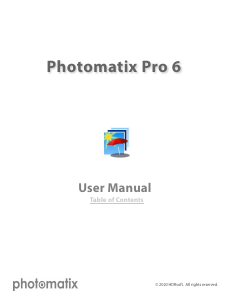


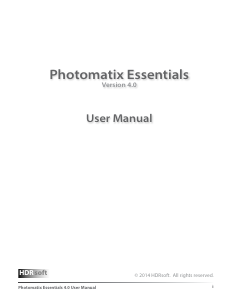
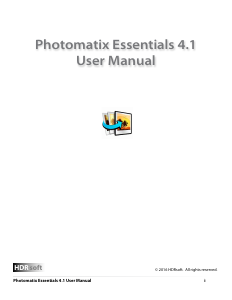
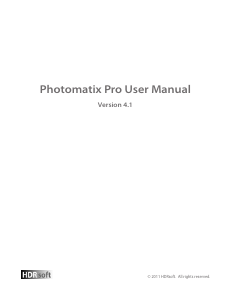
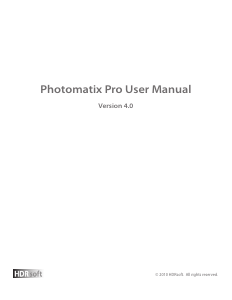
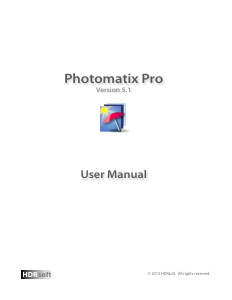
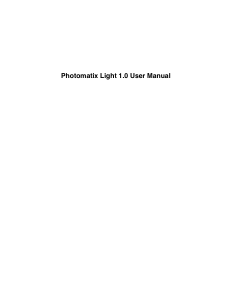
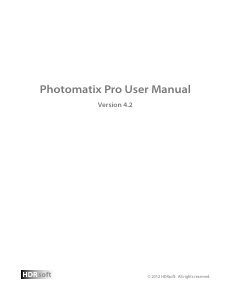
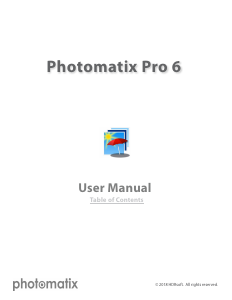
Praat mee over dit product
Laat hier weten wat jij vindt van de HDR Photomatix Pro 6.2. Als je een vraag hebt, lees dan eerst zorgvuldig de handleiding door. Een handleiding aanvragen kan via ons contactformulier.